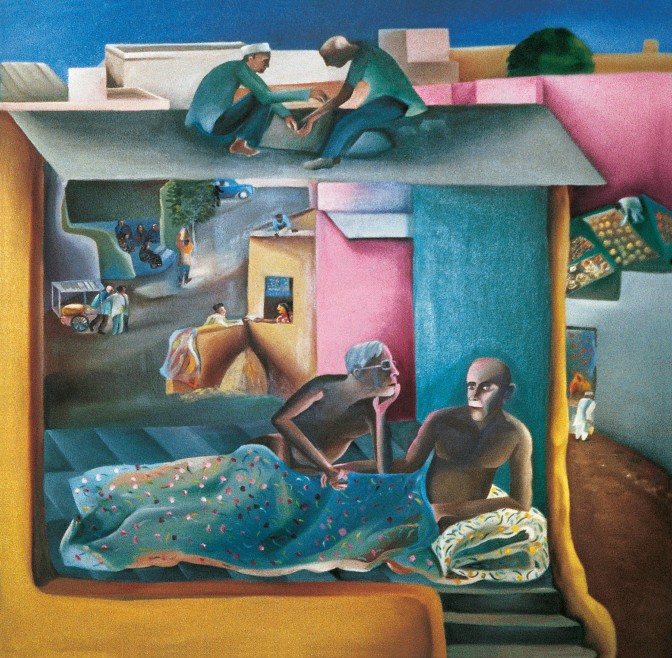By Sonia Corrêa
Last year, in London, I saw a superb retrospective of Bhupen Khakar the Indian painter who died in 2003. I was fascinated. Khakar was a modest art professor who lived in Baroda and spent his time giving classes, visiting friends, walking around the city, and feeding a gigantic alligator kept captive by one of his fellows. I was deeply intrigued by his paintings that are at once naif and highly sophisticated, blurring the boundaries between intimacy and public life. The subject matter of Khakha’s artwork is male homosociability and homoeroticism in the lived world of Indian common men. This extraneous universe is both transgressive of gender norms and devoid of female bodies. Colonial and post-colonial imprints were also traceable in the paintings and biographical notes and citations peppered across the exhibition. One of them was a brief description of the loneliness Khakar saw and experienced in British public male spaces during the period when he lived in England.
The revisiting of Article 377 of the Penal Code case by the Indian Supreme Court emerged as a good pretext to feature Khakhar’s artwork in SPW July 2018 announcement. If nothing else, because colourful and sad landscapes he painted are evocative of desires and practices that are both pervasive and interdicted.
To learn more about Bhupen Khakhar



